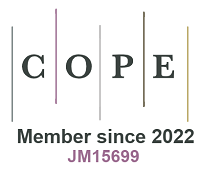Up-conversion effect boosted NIR-driven photocatalytic solar fuel generation of NaYF4: Yb, Er decorated ZnIn2S4 flowers with rich Zn vacancies
Abstract
Photocatalytic CO2 reduction for solar fuel generation is a promising approach to alleviating the environmental and energy crisis. Herein, a flower-like composite was obtained by assembling Zn vacancy-rich ZnIn2S4 (VZn-ZIS) with up-conversion nanoparticles (UCNPs, NaYF4: Yb, Er). Specifically, the optimized UCNPs@VZn-ZIS demonstrates superior CO generation of 32.57 μmol/g in the near-infrared (NIR)-driven photocatalytic CO2 reduction process within 8 h. Fortunately, the performance of photocatalytic CO2 reduction based on optimized UCNPs@VZn-ZIS is superior to most reported photocatalysts under NIR irradiation. The enhanced photocatalytic CO2 reduction activity is attributed to the extended light absorption, enhanced charge separation, and improved CO2 activation of the surface vacancy. The work presented here provides a facile approach to developing novel broad spectral responsive photocatalytic CO2 reduction photocatalysts, which hold great potential for solar fuel generation in future applications.
Keywords
INTRODUCTION
Nowadays, the energy crisis and environmental pollution issues are becoming increasingly serious with the rapid development of industrial society[1,2]. Great efforts have been devoted to the long-term development of human society. The photocatalytic reduction of CO2 into high-value-added chemicals is a promising approach to alleviating the environmental and energy crisis[3,4]. However, photocatalytic CO2 reduction efficiency suffers from unsatisfied light harvesting, fast combination of charge carriers, low reaction activity, and poor selectivity[5-7]. Therefore, the rational design of efficient photocatalytic CO2 reduction photocatalysts is of great significance in photocatalysis. It has been reported that visible and near-infrared (NIR) light account for about 45% and 50% of the total solar spectrum, respectively[8]. Compared with visible light, NIR light possesses a larger proportion, enhanced penetration depth, reduced absorption competition, and fewer side reactions, which will activate photocatalysts uniformly and increase the absorption and utilization of solar energy[9]. Among various photocatalytic CO2 reduction catalysts, ZnIn2S4 (ZIS) is a typical transition metal sulfide, which has drawn increasing attention based on great visible light harvesting, tunable morphology, and environmental friendliness properties[10-13]. However, the potential of utilizing ZIS as a NIR-responsive photocatalyst is rarely reported.
Tremendous strategies have been devoted to developing NIR-responsive photocatalysts. Among these approaches, modifying lanthanide-doped up-conversion nanoparticles (UCNPs) on the surface of semiconductors is considered an efficient approach to broaden the light-harvesting region[14-16]. In detail, the doping of rare earth ions can reduce the band gap of semiconductors, which can extend the light absorption into the NIR region. Specifically, the UCNP materials (e.g., NaYF4: Yb, Er) can absorb the low-energy photons (NIR) and emit high-energy photons (Ultraviolet or visible light) through the process of anti-stokes shift luminescence[17]. As a result, the emission of the UCNP materials can facilitate the generation of photo-induced electron-hole pairs for further photocatalytic applications. In detail, Yu et al. coupled UCNPs (NaYF4: Yb, Tm) with hierarchical ZIS nanorods as a NIR-responsive photocatalyst for photocatalytic CO2 reduction, which demonstrates the CO generation rate of 1,500 nmol/g/h[18]. It has been reported that UCNP materials have been utilized to combine with various semiconductors [such as TiO2, ZnO, and metal-organic frameworks (MOFs)], which often exhibit superior NIR-driven photocatalysis or photodynamic therapy[19-22]. However, it is still difficult to realize highly efficient photocatalytic CO2 reduction of the composites of UCNPs@semiconductor. Hence, it is of great meaning to develop highly efficient NIR-driven photocatalytic CO2 reduction photocatalysts based on up-conversion approaches.
Recently, introducing vacancies into the surface of photocatalysts has drawn increasing attention[23-25]. The introduced vacancy can generate a new energy level, which can improve photocatalytic activity due to extended light absorption and facilitated charge carrier separation[26]. Additionally, it can work as a reaction site, which can ameliorate the charge density distribution and reduce the reaction energy barrier of CO2 reduction[27]. Furthermore, the morphology control plays an important role in photocatalytic performance. Specifically, a hierarchical nanosheet assembled structure is favorable for the reduced diffusion distance for charge transportation when compared with bulk ones[28]. Therefore, it is a promising approach to develop nanosheet-assembled nanocatalysts with surface vacancy sites for much more efficient photocatalysis.
Herein, a NIR-responsive flower-like UCNPs@Zn vacancy-rich ZIS (VZn-ZIS) photocatalyst was developed by assembling UCNPs on nanosheet-assembled ZIS with rich zinc vacancies, which demonstrated superior CO evolution of 32.57 μmol/g under NIR light irradiation for 8 h. Moreover, the detailed photocatalytic CO2 reduction mechanism over UCNPs@VZn-ZIS is investigated by detailed characterization techniques. The elevated photocatalytic CO2 reduction performance is contributed by enhanced light harvesting and facilitated photo-induced charge separation. The facile design presented here holds great potential for NIR-driven solar fuel generation.
EXPERIMENTAL
Chemicals
Glycerol (Tianjin Fuyu Chemical Co., Ltd., AR); Deionized water (DI water); Ethanol (Tianjin Jingdongtianzheng Precision Chemical Reagent Factory, AR); Anhydrous Zinc chloride (ZnCl2, Innochem, 98%); Indium chloride trihydrate (InCl3·4H2O, Innochem, 99.99%); Thioacetamide (TAA, Innochem, ≥ 98%); Sodium hydroxide (NaOH, Tianjin Guangfu Fine Chemical Co., Ltd.); Ammonium Fluoride (NH4F, Fuchen Chemical Reagent Co., Ltd.); Methyl Alcohol (Anhui Tedia High Purity Solvents Co., Ltd., AR); Erbium chloride hexahydrate (ErCl3·6H2O, Innochem, 99.99%); Ytterbium chloride hexahydrate
Preparation of ZIS
The detailed synthesis procedures were described in Supplementary Materials.
Preparation of VZn-ZIS
VZn-ZIS was synthesized according to the previous literature[26]. The detailed procedures were described in Supplementary Materials.
Preparation of UCNPs
The detailed synthesis procedures were described in Supplementary Materials.
Preparation of UCNPs@VZn-ZIS
The UCNPs@VZn-ZIS composite was synthesized using a facile physical mixing method. Specifically, masses of VZn-ZIS and UCNPs were weighted separately and ground in a mortar for 5 min.
Characterizations
The characterization details were provided in the Supplementary Materials.
Electrochemical and photoelectrochemical characterizations
Electrochemical impedance spectroscopy (EIS), Photocurrent response, and Mott-Schottky (MS) measurements were conducted on a CHI660E electrochemical workstation with a standard three-electrode cell. Specifically, the Pt wire and Ag/AgCl electrode were selected as the counter electrode and reference electrode, respectively. As for the working electrode, 5 mg of VZn-ZIS was added to the mixture of ethanol (200 μL) and Nafion (20 μL). After sonicating the solution for several minutes, the catalyst was dropped on an indium tin oxide (ITO) glass with a controlled area of 1 cm2. The working electrode was obtained and then dried in air for 2 h. Photocurrent response was obtained using a 300 W Xe lamp as the light source.
Photocatalytic experiments
Photocatalytic CO2 reduction experiments were conducted in a 35 mL photocatalytic bottle under a Xe lamp with a cut-off filter (λ > 800 nm). Generally, 5 mg of photocatalyst was added into 10 mL of 0.1 M TEOA anhydrous acetonitrile. Before photocatalysis, high-purity CO2 gas was purged into the bottle for 20 min to remove the air. The photocatalytic CO2 reduction reaction was conducted under NIR light (PCX50C; China Education Au-light) with continuous stirring. At each time interval, 200 μL of gas was extracted and injected into a gas chromatograph (GC-2014) to analyze the composition and content of the gaseous product.
RESULTS AND DISCUSSION
Photocatalyst preparation
The synthesis procedure of UCNPs@VZn-ZIS is shown in Figure 1. Specifically, VZn-ZIS was prepared by a hydrothermal approach. The UCNPs (NaYF4: 20% Yb, 2% Er) were synthesized using a hydrothermal method under an Ar atmosphere. Subsequently, the composite of UCNPs@VZn-ZIS was obtained via a physical mixing approach.
Morphologies and characterizations
The morphology of samples was investigated using scanning electron microscopy (SEM), transmission electron microscopy (TEM), and high-resolution TEM (HRTEM) measurements. As shown in Figure 2A, VZn-ZIS demonstrates a nanosheet-assembled nanoflower-like morphology. As shown in the HRTEM image of VZn-ZIS in Figure 2B, the lattice fringe of 0.32 nm can be assigned to the (102) plane of ZIS. In addition, the discontinuous and distorted lattice fringes (in yellow circles) demonstrate the existence of vacancies in VZn-ZIS[29]. The prepared UCNPs were well-arranged nanoparticles, which can also regularly stack into pieces [Figure 2C]. In addition, the TEM image of UCNPs demonstrates a hexagonal shape with a size of about 20 nm [Supplementary Figure 3C]. As a result, the composite of UCNPs@VZn-ZIS exhibits the same flower-like morphology as VZn-ZIS with UCNPs decorated in petals [Figure 2D]. Furthermore, the yellow circle in the TEM image of UCNPs@VZn-ZIS [Figure 2E] also proves the existence of UCNPs on VZn-ZIS. In Figure 2F, the lattice fringe spacing of 0.29, 0.32, and 0.41 nm can be assigned to (104), (102), and (006) planes of hexagonal ZIS, accordingly[30,31]. The lattice fringe spacing of 0.51 nm belonged to the (100) plane of UCNPs[32]. Therefore, the coexistence of ZIS and UCNPs proves the successful preparation of
Figure 2. (A) SEM image and (B) HRTEM image of VZn-ZIS; (C) SEM image of UCNPs; (D) SEM, (E) TEM image, (F) HRTEM image and (G) SEM element mapping images of UCNPs@VZn-ZIS. SEM: Scanning electron microscopy; HRTEM: high-resolution transmission electron microscopy; VZn-ZIS: Zn vacancy-rich ZnIn2S4; UCNPs: up-conversion nanoparticles; TEM: transmission electron microscopy.
As shown in Figure 3A, X-ray diffraction (XRD) patterns of VZn-ZIS and ZIS are consistent with the reported hexagonal ZIS[33]. In addition, the diffraction peaks of UCNPs follow the relevant standard PDF card (No. 16-0334), proving the successful preparation of UCNPs. Moreover, the XRD patterns of
Figure 3. (A) XRD patterns of ZIS, VZn-ZIS, UCNPs, and UCNPs@VZn-ZIS; (B) DRS of VZn-ZIS, UCNPs, and UCNPs@VZn-ZIS; XPS spectra of Zn 2p, In 3d and S 2p of VZn-ZIS and UCNPs@VZn-ZIS (C-E); (F) EPR signals of ZIS and VZn-ZIS. XRD: X-ray diffraction; ZIS: ZnIn2S4; VZn-ZIS: Zn vacancy-rich ZnIn2S4; UCNPs: up-conversion nanoparticles; DRS: diffuse reflectance spectra; XPS: X-ray photoelectron spectroscopy; EPR: electron paramagnetic resonance.
Photocatalytic performance
The photocatalytic CO2 reduction process was conducted under NIR irradiation (800-1,100 nm) using triethanolamine as the sacrificial agent. As a result, the CO evolution of UCNPs@VZn-ZIS was up to
Figure 4. (A) CO evolution over time of VZn-ZIS, UCNPs, UCNPs@VZn-ZIS and UCNPs@ZIS; (B) Controlled photocatalytic CO2 reduction experiments in the absence of CO2, light or photocatalyst; (C) Carbon labeling experiment of the generated product using 13CO2 as the feed gas; (D) Photocatalytic CO2 reduction activity of UCNPs@VZn-ZIS with different mass ratio; (E) Photocatalytic stability test of UCNPs@VZn-ZIS; (F) Comparison of CO generation rate under NIR irradiation of UCNPs@VZn-ZIS with recent reported photocatalysts. VZn-ZIS: Zn vacancy-rich ZnIn2S4; UCNPs: up-conversion nanoparticles; NIR: near-infrared.
Photocatalytic charge separation
A series of characterizations were utilized to evaluate the charge separation and migration behaviors of photocatalysts, including photoluminescence (PL), PL decay curves, laser scanning confocal microscopy (LSCM) images, surface photovoltage (SPV), transient photocurrent and EIS. As shown in Figure 5A, pure UCNPs exhibit several up-conversion PL emission peaks of 410, 525, 546, and 660 nm when excited by a laser of
Figure 5. (A) PL curve of pure UCNPs when excited by a laser of 980 nm; (B) PL emission spectra of VZn-ZIS, UCNPs, and
Mechanism of photocatalytic CO2 reduction
The specific band positions of the photocatalysts were investigated by the MS and the Tauc plot. According to MS curves in Figure 6A, the slope of VZn-ZIS is positive, belonging to the n-type semiconductor[44]. Specifically, the flat potential of VZn-ZIS is -0.90 V (vs. Ag/AgCl). Therefore, the potential of the conduction band (CB) of VZn-ZIS is -0.90 eV [vs. normal hydrogen electrode (NHE)][26]. As shown in the Tauc plot in Figure 6B, the energy of the band gap (Eg) of VZn-ZIS is 2.69 eV. According to Eg = |ECB-EVB|, the potential of the valence band of VZn-ZIS is calculated as 1.79 eV (vs. NHE).
Figure 6. (A) MS curves and (B) Tauc plot of VZn-ZIS; (C) In-situ FTIR spectra of UCNPs@VZn-ZIS; (D) Photocatalytic CO2 reduction mechanism on UCNPs@VZn-ZIS under the NIR light irradiation. MS: Mott-Schottky; VZn-ZIS: Zn vacancy-rich ZnIn2S4; in-situ FTIR: in-situ Fourier transform infrared; UCNPs: up-conversion nanoparticles; NIR: near-infrared.
To clarify the mechanism of photocatalytic CO2 reduction of UCNPs@VZn-ZIS, in-situ Fourier transform infrared (in-situ FTIR) spectroscopy was adopted to test the reaction intermediates. As shown in Figure 6C, no peak exists in the absence of light and CO2. After introducing CO2 under irradiation, new peaks occurred and strengthened with the prolonged reaction time. In detail, the peak at 1,727 cm-1 belonged to the C=O bond, indicating that CO2 was successfully introduced to the system[45]. Besides, monodentate carbonate species (m-CO32-, 1,547, 1,488, 1,475, and 1,375 cm-1) and bidentate carbonate species (b-CO32-, 1,658, and 1,315 cm-1) were detected and increased with the increased irradiation time, proving that CO2 was dissolved in water (H2O, 1,641 cm-1)[46-49]. Moreover, the peaks of other carbon-based species such as bicarbonate species (HCO3-, 1,453, 1,416, and 1,398 cm-1), carboxylate species (COO-, 1,565, 1,363, and 1,338 cm-1), carboxyl (*COOH, 1,679, 1,527, and 1,288 cm-1) and formaldehyde species (HCHO-, 1,781 and 1,511 cm-1) also appeared during the process of photocatalytic CO2 reduction, proving these intermediates were produced on the surface of UCNPs@VZn-ZIS[46,50-52]. Notably, *COOH is a significant intermediate of reducing CO2 to CO according to the previous study[51]. These intermediates prove that the photocatalytic process of CO2 reduction occurred on the surface of UCNPs@VZn-ZIS.
The mechanism of up-conversion-induced photocatalytic CO2 reduction of UCNPs@VZn-ZIS is shown in Figure 6D. The UCNPS can emit green luminescence (546 and 525 nm) and red luminescence (660 nm) under the excitation of an infrared laser of 980 nm [Figure 5A]. In detail, the up-conversion generated red luminescence at 660 nm comprised three steps of energy transfer (ET) from Yb3+ to Er3+[53]. Firstly, Yb3+ ions are excited from the ground state (2F7/2) to the excited state (2F5/2) after absorbing photons from a laser of
CONCLUSIONS
In summary, a nanoflower-shaped UCNPs@VZn-ZIS photocatalyst was successfully synthesized through a facile physical mixing approach. With the green light emitted from up-conversion, VZn-ZIS was activated and e--h+ pairs for photocatalytic CO2 reduction were generated. The obtained UCNPs@VZn-ZIS demonstrates a superior CO evolution under pure NIR light irradiation. The enhanced CO evolution of UCNPs@VZn-ZIS was attributed to strengthened light harvesting, improved CO2 activation of the surface vacancy, and enhanced e--h+ pairs separation efficiency. The work presented here provides a facile approach to developing novel broad spectral responsive photocatalytic CO2 reduction photocatalysts, which hold great potential for solar fuel generation in future applications.
DECLARATIONS
Authors’ contributions
Validation, formal analysis, investigation, resources, data curation, writing - original draft: Li, X.; Wu, H.
Data curation: Yin, S.
Validation, formal analysis: Yu, C.
Data curation: Shao, Y.
Writing - review and editing: Zhou, D.
Conceptualization, validation, writing - review and editing: She, P.
Availability of data and materials
Experimental procedures and characterizations of photocatalysts are available in the Supplementary Materials. Further data is available from the corresponding authors upon reasonable request.
Financial support and sponsorship
This study was funded by the Department of Education of Jilin Province (JJKH20241250KJ), the National Natural Science Foundation of China (Grant Nos. 22301099 and 22279041), the National Key Research and Development Program of China (No. 2022YFC2105800) and the 111 Project (B17020).
Conflicts of interest
All authors declared that there are no conflicts of interest.
Ethical approval and consent to participate
Not applicable.
Consent for publication
Not applicable.
Copyright
© The Author(s) 2025.
Supplementary Materials
REFERENCES
1. Achakulwisut, P.; Erickson, P.; Guivarch, C.; Schaeffer, R.; Brutschin, E.; Pye, S. Global fossil fuel reduction pathways under different climate mitigation strategies and ambitions. Nat. Commun. 2023, 14, 5425.
3. Fang, S.; Rahaman, M.; Bharti, J.; et al. Photocatalytic CO2 reduction. Nat. Rev. Methods. Primers. 2023, 3, 243.
4. Albero, J.; Peng, Y.; García, H. Photocatalytic CO2 reduction to C2+ products. ACS. Catal. 2020, 10, 5734-49.
5. Bhanderi, D.; Lakhani, P.; Modi, C. K. Graphitic carbon nitride (g-C3N4) as an emerging photocatalyst for sustainable environmental applications: a comprehensive review. RSC. Sustain. 2024, 2, 265-87.
6. Yang, R.; Mei, L.; Fan, Y.; et al. ZnIn2S4-based photocatalysts for energy and environmental applications. Small. Methods. 2021, 5, e2100887.
7. Li, Z.; Li, Z.; Zuo, C.; Fang, X. Application of nanostructured TiO2 in UV photodetectors: a review. Adv. Mater. 2022, 34, e2109083.
8. Yang, M. Q.; Gao, M.; Hong, M.; Ho, G. W. Visible-to-NIR photon harvesting: progressive engineering of catalysts for solar-powered environmental purification and fuel production. Adv. Mater. 2018, 30, e1802894.
9. Han, C.; Kundu, B. K.; Liang, Y.; Sun, Y. Near-infrared light-driven photocatalysis with an emphasis on two-photon excitation: concepts, materials, and applications. Adv. Mater. 2024, 36, e2307759.
10. Xu, M.; Ruan, X.; Meng, D.; et al. Modulation of sulfur vacancies in ZnIn2S4/MXene Schottky heterojunction photocatalyst promotes hydrogen evolution. Adv. Funct. Mater. 2024, 34, 2402330.
11. Peng, H.; Yang, H.; Han, J.; et al. Defective ZnIn2S4 nanosheets for visible-light and sacrificial-agent-free H2O2 photosynthesis via O2/H2O redox. J. Am. Chem. Soc. 2023, 145, 27757-66.
12. Sun, L.; Wang, W.; Kong, T.; Jiang, H.; Tang, H.; Liu, Q. Fast charge transfer kinetics in an inorganic–organic S-scheme heterojunction photocatalyst for cooperative hydrogen evolution and furfuryl alcohol upgrading. J. Mater. Chem. A. 2022, 10, 22531-9.
13. Qiu, B.; Huang, P.; Lian, C.; et al. Realization of all-in-one hydrogen-evolving photocatalysts via selective atomic substitution. Appl. Catal. B. Environ. 2021, 298, 120518.
14. Tian, Q.; Yao, W.; Wu, W.; et al. Efficient UV–Vis-NIR responsive upconversion and plasmonic-enhanced photocatalyst based on lanthanide-doped NaYF4/SnO2/Ag. ACS. Sustainable. Chem. Eng. 2017, 5, 10889-99.
15. Huang, H.; Liang, X.; Wang, Z.; et al. Bi20TiO32 nanoparticles doped with Yb3+ and Er3+ as UV, visible, and near-infrared responsive photocatalysts. ACS. Appl. Nano. Mater. 2019, 2, 5381-8.
16. Xie, J.; Zhang, X.; Lu, Z.; et al. Up-conversion effect boosted the photocatalytic CO2 reduction activity of Z-scheme CPDs/BiOBr heterojunction. Inorg. Chem. Front. 2023, 10, 5127-35.
17. Wen, S.; Zhou, J.; Zheng, K.; Bednarkiewicz, A.; Liu, X.; Jin, D. Advances in highly doped upconversion nanoparticles. Nat. Commun. 2018, 9, 2415.
18. Yu, M.; Lv, X.; Mahmoud, I. A.; et al. Upconversion nanoparticles coupled with hierarchical ZnIn2S4 nanorods as a near-infrared responsive photocatalyst for photocatalytic CO2 reduction. J. Colloid. Interface. Sci. 2022, 612, 782-91.
19. Hou, Z.; Zhang, Y.; Deng, K.; et al. UV-emitting upconversion-based TiO2 photosensitizing nanoplatform: near-infrared light mediated in vivo photodynamic therapy via mitochondria-involved apoptosis pathway. ACS. Nano. 2015, 9, 2584-99.
20. Nie, Z.; Ke, X.; Li, D.; et al. NaYF4:Yb,Er,Nd@NaYF4:Nd upconversion nanocrystals capped with Mn:TiO2 for 808 nm NIR-triggered photocatalytic applications. J. Phys. Chem. C. 2019, 123, 22959-70.
21. Karami, A.; Farivar, F.; de, P. T. J.; et al. Facile multistep synthesis of ZnO-coated β-NaYF4:Yb/Tm upconversion nanoparticles as an antimicrobial photodynamic therapy for persistent Staphylococcus aureus small colony variants. ACS. Appl. Bio. Mater. 2021, 4, 6125-36.
22. Liu, Q.; Wu, B.; Li, M.; Huang, Y.; Li, L. Heterostructures made of upconversion nanoparticles and metal-organic frameworks for biomedical applications. Adv. Sci. 2022, 9, e2103911.
23. Cheng, Q.; Huang, M.; Xiao, L.; et al. Unraveling the influence of oxygen vacancy concentration on electrocatalytic CO2 reduction to formate over indium oxide catalysts. ACS. Catal. 2023, 13, 4021-9.
24. Peng, C.; Luo, G.; Zhang, J.; et al. Double sulfur vacancies by lithium tuning enhance CO2 electroreduction to n-propanol. Nat. Commun. 2021, 12, 1580.
25. Zhang, K.; Dan, M.; Yang, J.; et al. Surface energy mediated sulfur vacancy of ZnIn2S4 atomic layers for photocatalytic H2O2 production. Adv. Funct. Mater. 2023, 33, 2302964.
26. He, Y.; Rao, H.; Song, K.; et al. 3D hierarchical ZnIn2S4 nanosheets with rich Zn vacancies boosting photocatalytic CO2 reduction. Adv. Funct. Mater. 2019, 29, 1905153.
27. Nie, Y.; Bo, T.; Zhou, W.; et al. Understanding the role of Zn vacancy induced by sulfhydryl coordination for photocatalytic CO2 reduction on ZnIn2S4. J. Mater. Chem. A. 2023, 11, 1793-800.
28. Zhang, G.; Wu, H.; Chen, D.; et al. A mini-review on ZnIn2S4-based photocatalysts for energy and environmental application. Green. Energy. Environ. 2022, 7, 176-204.
29. Ouyang, C.; Quan, X.; Chen, Z. A.; et al. Intercalation- and vacancy-enhanced internal electric fields in ZnIn2S4 for highly efficient photocatalytic H2O2 production. J. Phys. Chem. C. 2023, 127, 20683-99.
30. Zhang, Z.; Liu, K.; Feng, Z.; Bao, Y.; Dong, B. Hierarchical sheet-on-sheet ZnIn2S4/g-C3N4 heterostructure with highly efficient photocatalytic H2 production based on photoinduced interfacial charge transfer. Sci. Rep. 2016, 6, 19221.
31. Xin, Z.; Zheng, H.; Hu, J. Construction of hollow Co3O4@ZnIn2S4 p-n heterojunctions for highly efficient photocatalytic hydrogen production. Nanomaterials 2023, 13, 758.
32. Qiu, H.; Tan, M.; Ohulchanskyy, T. Y.; Lovell, J. F.; Chen, G. Recent progress in upconversion photodynamic therapy. Nanomaterials 2018, 8, 344.
33. Si, S.; Shou, H.; Mao, Y.; et al. Low-coordination single Au atoms on ultrathin ZnIn2S4 nanosheets for selective photocatalytic CO2 reduction towards CH4. Angew. Chem. Int. Ed. Engl. 2022, 61, e202209446.
34. Chong, W. K.; Ng, B. J.; Lee, Y. J.; et al. Self-activated superhydrophilic green ZnIn2S4 realizing solar-driven overall water splitting: close-to-unity stability for a full daytime. Nat. Commun. 2023, 14, 7676.
35. Xu, B.; Li, H.; Chong, B.; Lin, B.; Yan, X.; Yang, G. Zn vacancy-tailoring mediated ZnIn2S4 nanosheets with accelerated orderly charge flow for boosting photocatalytic hydrogen evolution. Chem. Eng. Sci. 2023, 270, 118533.
36. Liang, L.; Li, X.; Zhang, J.; et al. Efficient infrared light induced CO2 reduction with nearly 100% CO selectivity enabled by metallic CoN porous atomic layers. Nano. Energy. 2020, 69, 104421.
37. Ye, L.; Wang, H.; Jin, X.; et al. Synthesis of olive-green few-layered BiOI for efficient photoreduction of CO2 into solar fuels under visible/near-infrared light. Sol. Energ. Mat. Sol. C. 2016, 144, 732-9.
38. Kong, X. Y.; Tan, W. L.; Ng, B.; Chai, S.; Mohamed, A. R. Harnessing Vis–NIR broad spectrum for photocatalytic CO2 reduction over carbon quantum dots-decorated ultrathin Bi2WO6 nanosheets. Nano. Res. 2017, 10, 1720-31.
39. Liang, L.; Li, X.; Sun, Y.; et al. Infrared light-driven CO2 overall splitting at room temperature. Joule 2018, 2, 1004-16.
40. Ji, X.; Guo, R.; Tang, J.; et al. Construction of full solar-spectrum-driven Cu2-xS/Ni-Al-LDH heterostructures for efficient photocatalytic CO2 reduction. ACS. Appl. Energy. Mater. 2022, 5, 2862-72.
41. Wang, F.; Chen, S.; Wu, J.; Xiang, W.; Duan, L. Construction of 2D/3D g-C3N4/ZnIn2S4 heterojunction for efficient photocatalytic reduction of CO2 under visible light. Ind. Eng. Chem. Res. 2023, 62, 15907-18.
42. Ji, J.; Li, R.; Zhang, H.; et al. Highly selective photocatalytic reduction of CO2 to ethane over Au-O-Ce sites at micro-interface. Appl. Catal. B. Environ. 2023, 321, 122020.
43. Hu, T.; Feng, P.; Guo, L.; Chu, H.; Liu, F. Construction of built-in electric field in TiO2@Ti2O3 core-shell heterojunctions toward optimized photocatalytic performance. Nanomaterials 2023, 13, 2125.
44. Ouyang, C.; Quan, X.; Zhang, C.; et al. Direct Z-scheme ZnIn2S4@MoO3 heterojunction for efficient photodegradation of tetracycline hydrochloride under visible light irradiation. Chem. Eng. J. 2021, 424, 130510.
45. Böke, J. S.; Popp, J.; Krafft, C. Optical photothermal infrared spectroscopy with simultaneously acquired Raman spectroscopy for two-dimensional microplastic identification. Sci. Rep. 2022, 12, 18785.
46. Wang, L.; Cheng, B.; Zhang, L.; Yu, J. In situ irradiated XPS investigation on S-scheme TiO2@ZnIn2S4 photocatalyst for efficient photocatalytic CO2 reduction. Small 2021, 17, e2103447.
47. Shangguan, W.; Liu, Q.; Wang, Y.; et al. Molecular-level insight into photocatalytic CO2 reduction with H2O over Au nanoparticles by interband transitions. Nat. Commun. 2022, 13, 3894.
48. Wang, B.; Zhang, W.; Liu, G.; et al. Excited electron-rich Bi(3-x)+ sites: a quantum well-like structure for highly promoted selective photocatalytic CO2 reduction performance. Adv. Funct. Mater. 2022, 32, 2202885.
49. Pogorelov, V.; Doroshenko, I.; Pitsevich, G.; et al. From clusters to condensed phase - FT IR studies of water. J. Mol. Liq. 2017, 235, 7-10.
50. Ran, L.; Li, Z.; Ran, B.; et al. Engineering single-atom active sites on covalent organic frameworks for boosting CO2 photoreduction. J. Am. Chem. Soc. 2022, 144, 17097-109.
51. Ma, Y.; Zhang, Y.; Xie, G.; et al. Isolated Cu sites in CdS hollow nanocubes with doping-location-dependent performance for photocatalytic CO2 reduction. ACS. Catal. 2024, 14, 1468-79.
52. Zhang, J.; Cao, C.; Wang, J.; Li, S.; Xie, Y. NaYF4:Yb,Er@NaYF4:Yb,Tm and NaYF4:Yb,Tm@NaYF4:Yb,Er core@shell upconversion nanoparticles embedded in acrylamide hydrogels for anti-counterfeiting and information encryption. ACS. Appl. Nano. Mater. 2022, 5, 16642-54.
53. Chen, G.; Qiu, H.; Prasad, P. N.; Chen, X. Upconversion nanoparticles: design, nanochemistry, and applications in theranostics. Chem. Rev. 2014, 114, 5161-214.
54. Ansari, A. A.; Labis, J. P.; Khan, A. Biocompatible NaYF4:Yb,Er upconversion nanoparticles: colloidal stability and optical properties. J. Saudi. Chem. Soc. 2021, 25, 101390.
Cite This Article
How to Cite
Download Citation
Export Citation File:
Type of Import
Tips on Downloading Citation
Citation Manager File Format
Type of Import
Direct Import: When the Direct Import option is selected (the default state), a dialogue box will give you the option to Save or Open the downloaded citation data. Choosing Open will either launch your citation manager or give you a choice of applications with which to use the metadata. The Save option saves the file locally for later use.
Indirect Import: When the Indirect Import option is selected, the metadata is displayed and may be copied and pasted as needed.
About This Article
Copyright
Author Biographies
































Comments
Comments must be written in English. Spam, offensive content, impersonation, and private information will not be permitted. If any comment is reported and identified as inappropriate content by OAE staff, the comment will be removed without notice. If you have any queries or need any help, please contact us at [email protected].